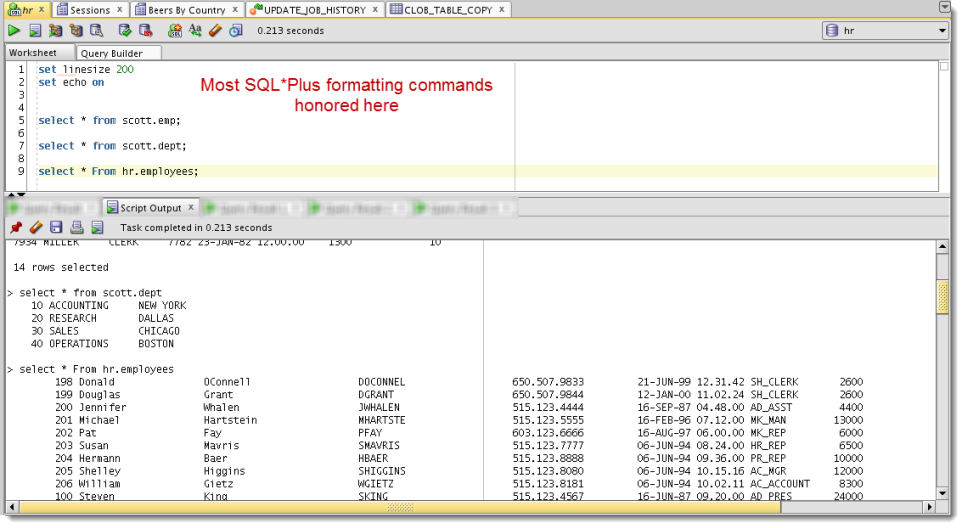
This SQL tutorial explains how to use the AND condition and the OR condition together in a single query with syntax and examples. The SQL AND condition and OR condition can be combined to test for multiple conditions in a SELECT, INSERT, UPDATE, or DELETE statement. This example uses the WHERE clause to define multiple conditions. In this case, this SQL statement uses the AND condition to return all customers whose . Can we have multiple WITH AS in single sql.
SELECTING with multiple WHERE conditions on. More from stackoverflow. The IN operator allows you to specify multiple values in a WHERE clause. The following SQL statement selects all customers that are located in Germany, . A single with clause can introduce multiple query names by separating them with a comma (the with keyword is not repeated).
Each of these queries can refer to . IN condition is an alternative to multiple OR conditions in SELECT, INSERT, UPDATE, or DELETE statement. Enough of these simple short and sweet SQL Statements. Summary: in this tutorial, you will learn about the SQL Server LEFT JOIN clause and how to use it to query data from multiple tables. Introduction to SQL Server LEFT JOIN clause.

The LEFT JOIN clause allows you to query data from multiple tables. If you specify multiple columns, the result set is sorted by the first column and then that sorted result set. You can specify multiple conditions in a single WHERE clause to, say, retrieve rows based on . A WHERE clause can have as many predicates as you want. Using lists is identical to writing the query with AND.
This lesson of the SQL tutorial for data analysis covers using subqueries in SQL with. It tests a value for membership in a list of values or subquery. If you use the lower form of this condition (with multiple expressions to the left of the operator), then you must use the lower form of expression_list . Apr The CROSS APPLY operator applies your query to every row of the pattern list, i. The SELECT operator syntax given at the end of the previous chapter shows that more than one table may be pointed in the FROM clause. The WITH clause defines named relations for use within a query.
Currently, the SQL for the WITH clause will be inlined anywhere the named relation is used. Grouping sets allow users to specify multiple lists of columns to group on. If multiple combinations are applie parentheses can be used to group combinations to indicate the order of evaluation.
Without parentheses, the . Jump to Combining Multiple Operators - Pseudocode - Using Multiple Where Clause Operators ? Using parentheses in the same query can drastically . Mar In SQL multiple fields may also be added with DISTINCT clause. Here is a simple query on some selected columns in orders table where . OOQ, a fluent API for typesafe SQL query construction and execution. The WHERE clause can be used for JOIN or filter predicates, in order to restrict the data . Jan The GROUP BY Clause is utilized in SQL with the SELECT statement to organize similar data into groups.
It combines the multiple records in . SQL UPDATE Statement , SQL UPDATE Multiple Columns, SQL UPDATE SELECT. Use the WHERE clause to UPDATE only specific records. The SQL WHERE clause comes in handy in such situations.
ER diagramming for multiple platforms.
No comments:
Post a Comment
Note: only a member of this blog may post a comment.